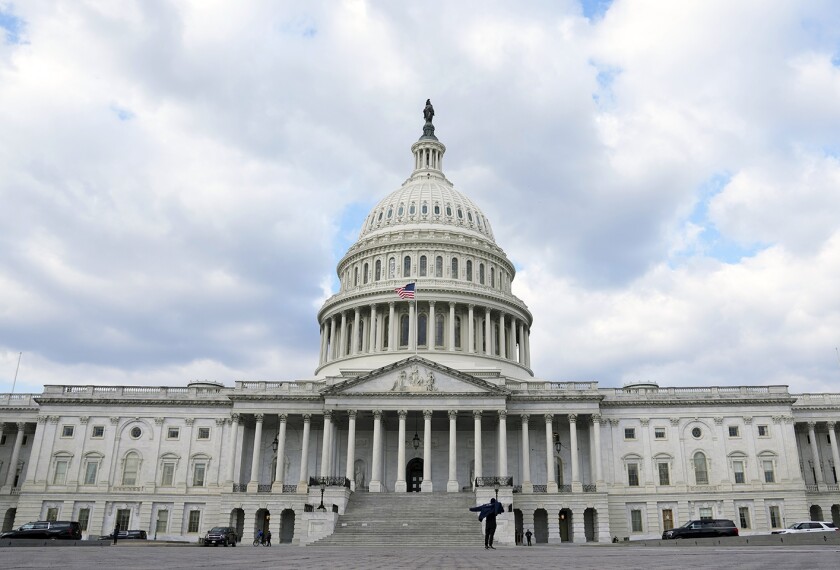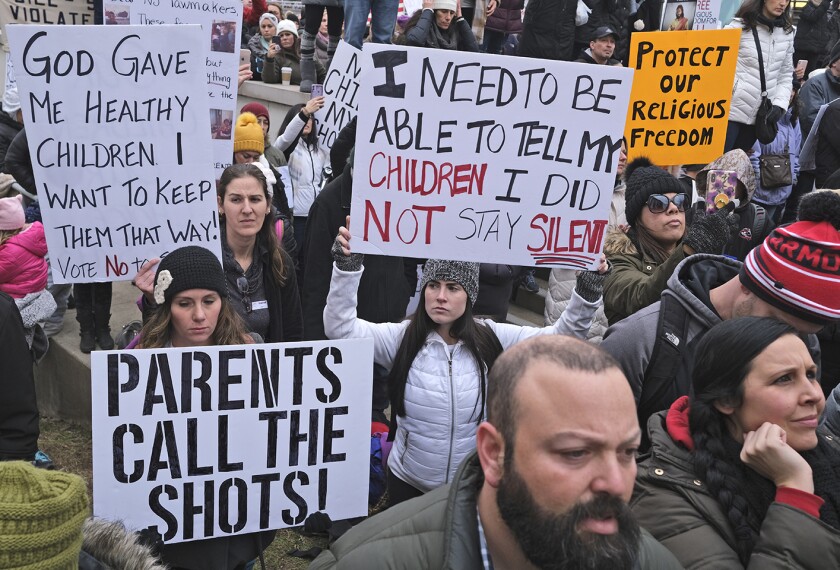Educators prefer governors who are taking a more-measured, cautious approach to managing schools during the pandemic. That’s the big takeaway from a recent survey by the EdWeek Research Center.
The survey—conducted Oct. 28 and 29 with 1,630 teachers, principals, and school district leaders—also found that educators’ highly negative views about how President Donald Trump and U.S. Secretary of Education Betsy Devos have reacted to coronavirus challenges for K-12 schools have remained roughly the same since the summer.
Closer to home, school board members and superintendents generally earn more positive ratings than state or federal officials for their leadership around challenges related to COVID-19.
Of the 16 states for which results are available, Ohio Gov. Mike DeWine, a Republican, has both the highest overall favorability rating (87 percent) and the highest share of educators whose opinions grew more positive as a result of how he has handled school issues related to the pandemic (68 percent). DeWine has taken a more-cautious approach than other governors. The Ohio governor was one of the first to close schools in the spring and believes more schools will need to go to full-time remote learning as cases rise. DeWine also issued an executive order that students and educators in K-12 need to wear masks in school buildings.
At the other end of the spectrum, Arizona Gov. Doug Ducey, a Republican, has the lowest favorability rating (28 percent), followed by Florida Gov. Ron DeSantis, also a Republican (30 percent). DeSantis has the lowest share of respondents whose opinions grew more favorable as a result of how he has dealt with school issues related to the coronavirus (13 percent) while Ducey’s is second-lowest (16 percent). Ducey and DeSantis have aggressively pushed schools to provide full-time in-person instruction, even while coronavirus cases were rising in their states. Ducey also said schools would need to develop their own policies about wearing masks.
Across the country, educators are considerably less positive about the reactions of their governors to school-related pandemic challenges than they were in April, which was the first time the Research Center asked that question.
Back then, 57 percent said their opinions of their states’ governors had grown more favorable as a result of the way the pandemic had been handled. That share dropped to 39 percent in July and 36 percent in October. Overall, 64 percent say they currently have a generally favorable view of their governors, down from 68 percent the first time the Research Center asked that question in July.
Evaluating Trump and Devos
Educator opinions of Trump and Devos in general showed slight upticks in approval, but still remain very low, according to the October survey.
President Trump has a 36 percent favorability rating among K-12 educators, up from 33 percent in July.
Regarding COVID-19 specifically, 16 percent of the educators who responded to the October survey say their opinion of Trump grew more favorable due to his reaction to the pandemic and schools. That’s up from 13 percent of the 1,366 educators who responded to the EdWeek Research Center’s July survey.
In addition, the share of educators saying their opinion of the president grew less favorable as a result of his handling of school issues related to the pandemic declined between July and October from 62 percent to 56 percent.
During that same period, U.S. Secretary of Education Betsy DeVos also saw a similar decline in the share of educators whose opinions grew less favorable as a result of her handling of the pandemic (66 percent to 56 percent). The share of educators whose opinion of DeVos grew more positive remained unchanged at 4 percent.
In addition, the October survey found that Trump and DeVos are significantly more popular among white and rural educators and much less popular among Black and urban educators. People of color are being hit disproportionately hard by COVID-19.
Back in July, the Trump administration had started a concerted effort to encourage schools to fully reopen at the start of the 2020-21 academic year, in a push that included threats to cut funding to schools that remained closed. The president’s position on reopening has not changed.
Despite the president’s threats about reopening, the share of district leaders saying their schools provide full-time in-person instruction to nearly all students remains relatively low (16 percent), compared with a mix of remote and in-person instruction (65 percent). Nineteen percent of district leaders report using full-time remote instruction.
Local Leaders Get Higher Marks
According to the EdWeek Research Center survey, school board members and superintendents earn more positive ratings than state or federal officials for their leadership around challenges related to COVID-19, but negative views have increased a bit since July.
That month, 19 percent of educators said they had a less favorable opinion of their school board members as a result of how they handled pandemic issues, compared with 25 percent in October. During the same period, that figure increased slightly when educators were asked about their superintendents—from 18 percent to 20 percent.
Administrators tend to be more positive than teachers when it comes to these local leaders. For example, 83 percent of district leaders and 84 percent of principals assign a favorable rating to their district’s school board, compared with 69 percent of teachers. Similarly, roughly half of principals and district leaders, compared with just over a third of teachers, say their opinions of their district’s superintendent have grown more favorable as a result of his/her handling of issues related to the coronavirus.
Principals and district administrators also tend to have more positive opinions than teachers of how their school board members have handled COVID-19 issues. Thirty-three percent of district leaders and 38 percent of principals say their opinions of their school boards have grown more favorable, compared with 24 percent of teachers.





